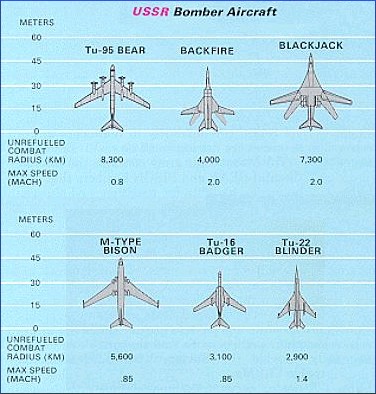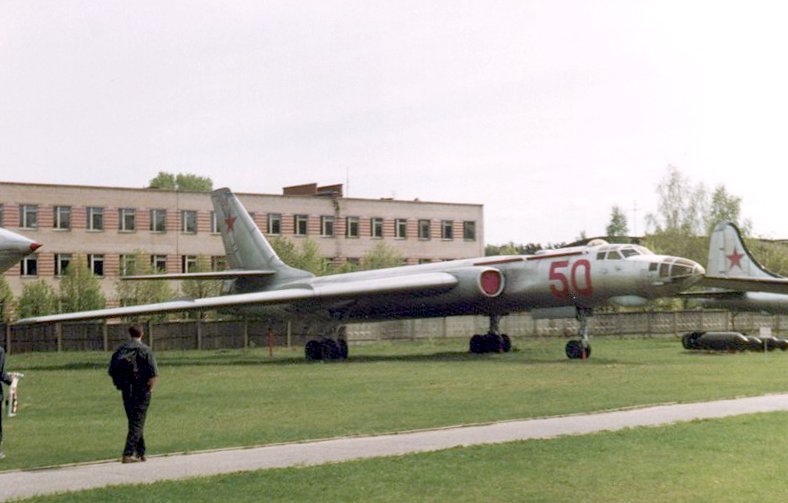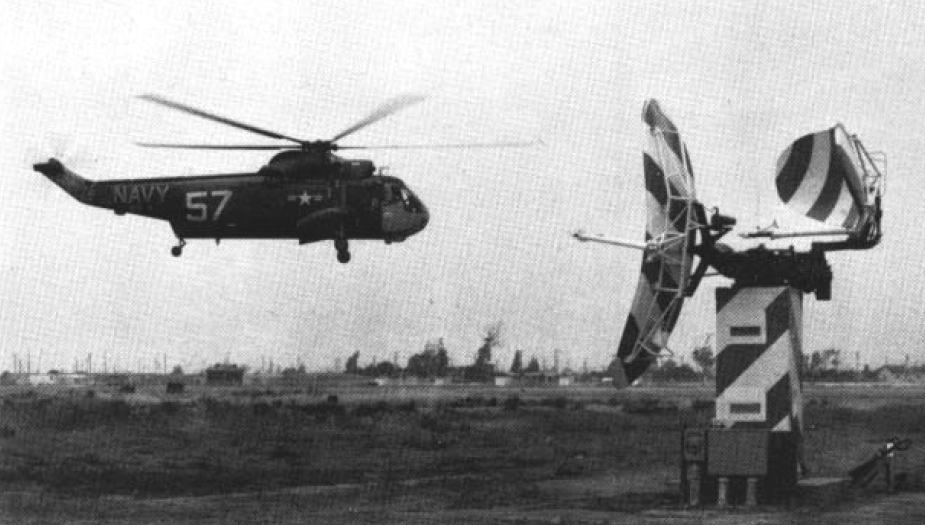|
Dolon Southwest
Dolon Southwest was a dispersal bomber base in Semipalatinsk, Kazakhstan, located 43 km south-west of Dolon (air base). It was part of the Far East command of Soviet Air Forces Long Range Aviation. A Central Intelligence Agency document listed the coordinates of the airfield while referencing a 1968 deployment of 21 Tupolev Tu-16 "Badger" bombers, the first deployment of this aircraft at the airfield. Dolon was listed as having eight support buildings, a refueling facility, an instrument landing system, and ground controlled approach In aviation a ground-controlled approach (GCA), is a type of service provided by air-traffic controllers whereby they guide aircraft to a safe landing, including in adverse weather conditions, based on primary radar images. Most commonly a GCA uses ... (GCA). Almost no trace remains of the base. References Airports in Kazakhstan Former Soviet military air bases in Kazakhstan Military installations closed in the 1990s {{Russi ... [...More Info...] [...Related Items...] OR: [Wikipedia] [Google] [Baidu] |
Semipalatinsk
Semey ( kk, Семей, Semei, سەمەي; cyrl, Семей ), until 2007 known as Semipalatinsk (russian: Семипала́тинск) and in 1917–1920 as Alash-kala ( kk, Алаш-қала, ''Alaş-qala''), is a city in eastern Kazakhstan, in the Kazakh part of Siberia. When Abai Region was created in 2022, Semey became its administrative centre. It lies along the Irtysh River near the border with Russia, north of Almaty and southeast of the Russian city of Omsk. Its population is History The first Russian settlement in the area dates from 1718, when Russia built a fort beside the river Irtysh, near the ruins of an ancient Buddhist monastery, where seven buildings could be seen. The fort (and later the city) was named ''Semipalatinsk'' (Russian for "Seven-Chambered City") after the monastery. The fort suffered frequently from flooding caused by snowmelt swelling the Irtysh. In 1778 the fort was relocated upstream to less flood-prone ground. A small city developed ... [...More Info...] [...Related Items...] OR: [Wikipedia] [Google] [Baidu] |
Dolon (air Base)
Dolon (also known as Chagan and Semipalitinsk Dolon) is an air base in Semipalatinsk (modern Semey), Kazakhstan, that served as a major Cold War bomber base under the 37th Air Army, Soviet Long Range Aviation. It contains significant tarmac space and over 50 revetments. Until at least 1980 it served as one of three bases for the Soviet Union's Tupolev Tu-95 "Bear" long-range bomber fleet. The nearby Dolon Southwest, a former airfield 32 km to the south, was probably a dispersal field and no longer exists. In 1955, Dolon was one of only six Soviet bases capable of handling the Myasishchev M-4 (Bison) bomber. The 79th Heavy Bomber Aviation Division was created at Dolon in 1957. The Tupolev Tu-160 (Blackjack) was temporarily deployed to Dolon in the late 1980s. In 1990, Dolon had 40 Tupolev Tu-95 (Bear) aircraft, which were eliminated by 1994, ending the base's strategic bomber role. Units based at Dolon included: *79th Heavy Bomber Aviation Division * 1023rd Heavy Bomber A ... [...More Info...] [...Related Items...] OR: [Wikipedia] [Google] [Baidu] |
Soviet Air Forces
The Soviet Air Forces ( rus, Военно-воздушные силы, r=Voyenno-vozdushnyye sily, VVS; literally "Military Air Forces") were one of the air forces of the Soviet Union. The other was the Soviet Air Defence Forces. The Air Forces were formed from components of the Imperial Russian Air Service in 1917, and faced their greatest test during World War II. The groups were also involved in the Korean War, and dissolved along with the Soviet Union itself in 1991–92. Former Soviet Air Forces' assets were subsequently divided into several air forces of former Soviet republics, including the new Russian Air Force. "March of the Pilots" was its song. Origins The ''All-Russia Collegium for Direction of the Air Forces of the Old Army'' (translation is uncertain) was formed on 20 December 1917. This was a Bolshevik aerial headquarters initially led by Konstantin Akashev. Along with a general postwar military reorganisation, the collegium was reconstituted as the "Workers' an ... [...More Info...] [...Related Items...] OR: [Wikipedia] [Google] [Baidu] |
Long Range Aviation
Long-Range Aviation ( rus, Авиация Дальнего Действия, r=Aviatsiya dal'nego deystviya, abbr. to AДД, or ADD, and literally ''Aviation of Distant Action'') is a branch of the Russian Aerospace Forces responsible for delivering long-range nuclear or conventional strikes by aircraft rather than missiles. The branch was previously part of the Soviet Air Forces and Russian Air Force tasked with long-range bombardment of strategic targets with nuclear weapons. During the Cold War, it was the counterpart to the Strategic Air Command of the United States Air Force. Origins, 1936-1940 The first three Air Armies, designated Air Armies of Specific Purpose (or Particular Purpose) were created between 1936 and 1938. In accordance with the predominant Deep operations doctrine, the Red Army was reorganized into six echelons, of which the long-range aviation was the 1st echelon. The 2nd echelon consisted of: heavy tanks; the 3rd echelon: medium and light tanks; the 4 ... [...More Info...] [...Related Items...] OR: [Wikipedia] [Google] [Baidu] |
Central Intelligence Agency
The Central Intelligence Agency (CIA ), known informally as the Agency and historically as the Company, is a civilian foreign intelligence service of the federal government of the United States, officially tasked with gathering, processing, and analyzing national security information from around the world, primarily through the use of human intelligence (HUMINT) and performing covert actions. As a principal member of the United States Intelligence Community (IC), the CIA reports to the Director of National Intelligence and is primarily focused on providing intelligence for the President and Cabinet of the United States. President Harry S. Truman had created the Central Intelligence Group under the direction of a Director of Central Intelligence by presidential directive on January 22, 1946, and this group was transformed into the Central Intelligence Agency by implementation of the National Security Act of 1947. Unlike the Federal Bureau of Investigation (FBI), which is a ... [...More Info...] [...Related Items...] OR: [Wikipedia] [Google] [Baidu] |
Tupolev Tu-16
The Tupolev Tu-16 ( NATO reporting name: Badger) is a twin-engined jet strategic heavy bomber used by the Soviet Union. It has been flown for almost 70 years, and the Chinese license-built Xian H-6 remains in service with the People's Liberation Army Air Force. Development In the late 1940s, the Soviet Union was strongly committed to matching the United States in strategic bombing capability. The Soviets' only long-range bomber at the time was Tupolev's Tu-4 'Bull', a reverse-engineered copy of the American B-29 Superfortress. The development of the notably powerful Mikulin AM-3 turbojet led to the possibility of a large, jet-powered bomber. The Tupolev design bureau began work on the Tu-88 ("Aircraft N") prototypes in 1950. The Tu-88 first flew on 27 April 1952. After winning a competition against the Ilyushin Il-46, it was approved for production in December 1952. The first production bombers entered service with Frontal Aviation in 1954, receiving the service designation ... [...More Info...] [...Related Items...] OR: [Wikipedia] [Google] [Baidu] |
Instrument Landing
In aviation, the instrument landing system (ILS) is a precision radio navigation system that provides short-range guidance to aircraft to allow them to approach a runway at night or in bad weather. In its original form, it allows an aircraft to approach until it is over the ground, within a of the runway. At that point the runway should be visible to the pilot; if it is not, they perform a missed approach. Bringing the aircraft this close to the runway dramatically increases the range of weather conditions in which a safe landing can be made. Other versions of the system, or "categories", have further reduced the minimum altitudes, runway visual ranges (RVRs), and transmitter and monitoring configurations designed depending on the normal expected weather patterns and airport safety requirements. ILS uses two directional radio signals, the ''localizer'' (108 to 112 MHz frequency), which provides horizontal guidance, and the ''glideslope'' (329.15 to 335 MHz frequency ... [...More Info...] [...Related Items...] OR: [Wikipedia] [Google] [Baidu] |
Ground Controlled Approach
In aviation a ground-controlled approach (GCA), is a type of service provided by air-traffic controllers whereby they guide aircraft to a safe landing, including in adverse weather conditions, based on primary radar images. Most commonly a GCA uses information from either a Precision Approach Radar (PAR, for precision approaches with vertical, glidepath guidance) or an Airport Surveillance Radar (ASR, providing a non-precision surveillance radar approach with no glidepath guidance). The term GCA may refer to any type of ground radar guided approach such as a PAR, PAR without glideslope or ASR. When both vertical and horizontal guidance from the PAR is given, the approach is termed a precision approach. If no PAR glidepath is given, even if PAR equipment is used for lateral guidance, it is considered a non-precision approach. History Early experiments The GCA concept was originally developed by nuclear physicist Luis Alvarez. Originally of the University of California, Berkeley, in ... [...More Info...] [...Related Items...] OR: [Wikipedia] [Google] [Baidu] |
Airports In Kazakhstan ...
This is a list of airports in Kazakhstan, sorted by location. __TOC__ Airports Airport names shown in bold indicate the facility has scheduled passenger service on a commercial airline. See also * Transport in Kazakhstan * List of airports by ICAO code: U#Kazakhstan * Wikipedia: WikiProject Aviation/Airline destination lists: Asia#Kazakhstan References * * * – includes IATA codes * * {{List of airports in Europe Kazakhstan Airports Airports Kazakhstan Kazakhstan Kazakhstan, officially the Republic of Kazakhstan, is a transcontinental country located mainly in Central Asia and partly in Eastern Europe. It borders Russia to the north and west, China to the east, Kyrgyzstan to the southeast, Uzbeki ... [...More Info...] [...Related Items...] OR: [Wikipedia] [Google] [Baidu] |
Former Soviet Military Air Bases In Kazakhstan
A former is an object, such as a template, gauge or cutting die, which is used to form something such as a boat's hull. Typically, a former gives shape to a structure that may have complex curvature. A former may become an integral part of the finished structure, as in an aircraft fuselage, or it may be removable, being using in the construction process and then discarded or re-used. Aircraft formers Formers are used in the construction of aircraft fuselage, of which a typical fuselage has a series from the nose to the empennage, typically perpendicular to the longitudinal axis of the aircraft. The primary purpose of formers is to establish the shape of the fuselage and reduce the column length of stringers to prevent instability. Formers are typically attached to longerons, which support the skin of the aircraft. The "former-and-longeron" technique (also called stations and stringers) was adopted from boat construction, and was typical of light aircraft built until the ad ... [...More Info...] [...Related Items...] OR: [Wikipedia] [Google] [Baidu] |






